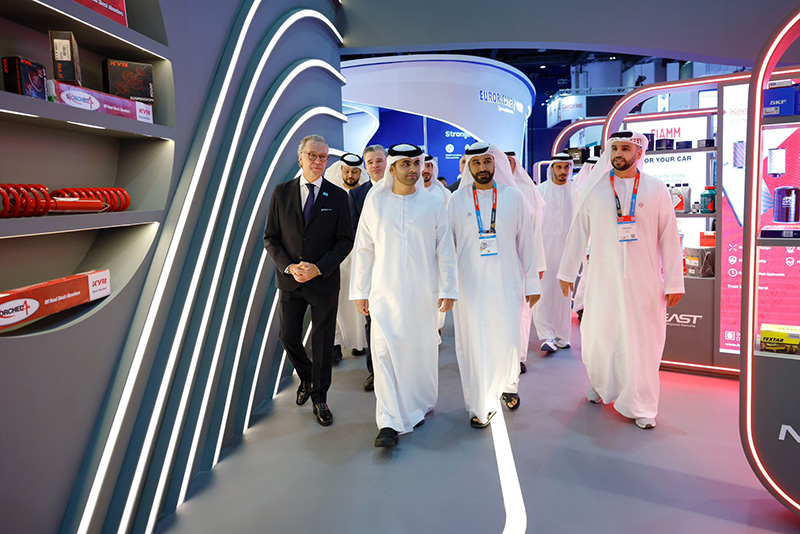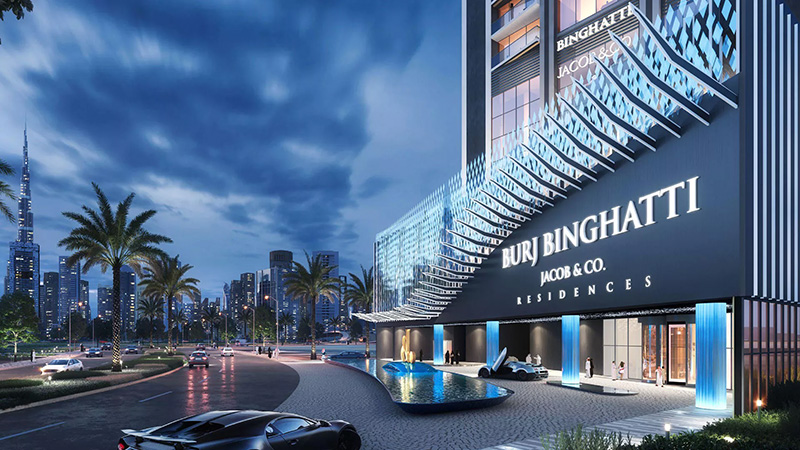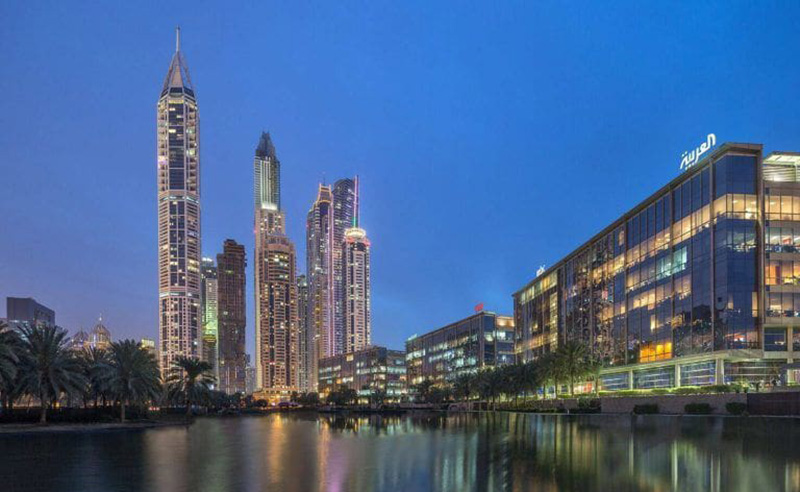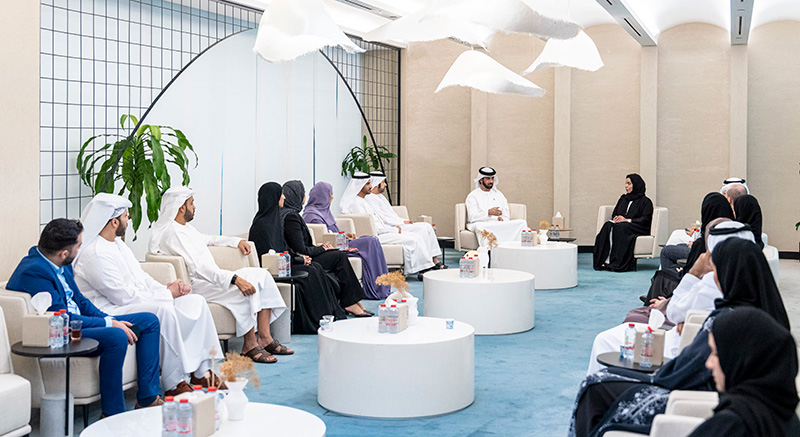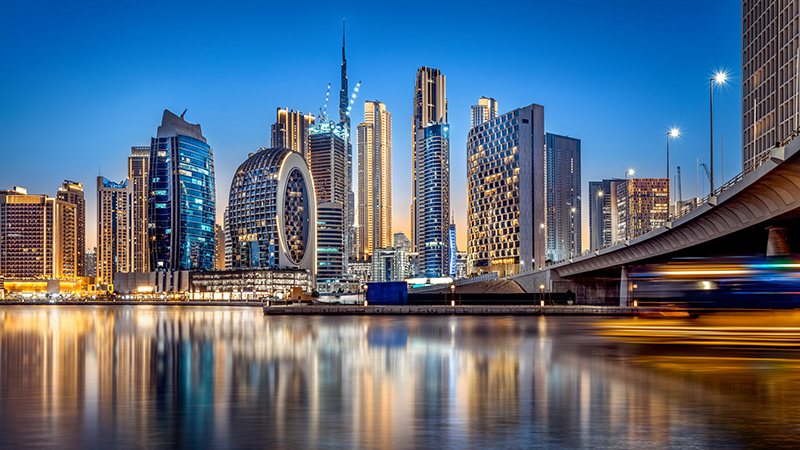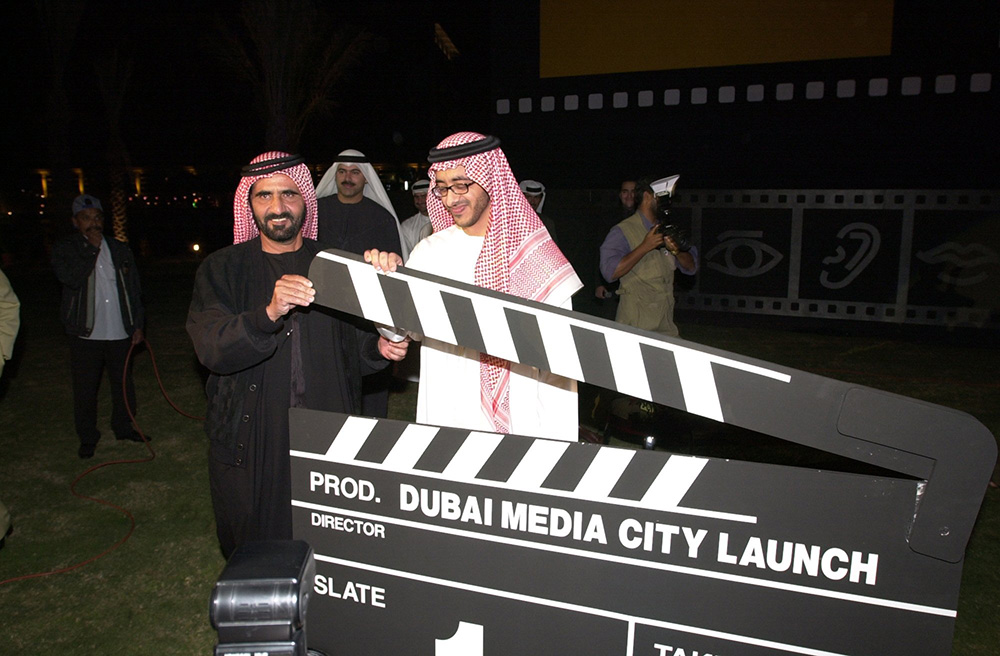
Origins and Establishment
In the late 1990s Sheikh Mohammad bin Rashid Al Maktoum conceived Dubai Media City (DMC) as part of his vision to make Dubai the media capital of the Middle East. At that time, Dubai’s media sector was minimal, essentially one newspaper (Al-Bayan), a few local magazines, and only a couple of radio stations. (Television only began in Dubai in 1969 as “Kuwait TV from Dubai,” later rebranded UAE TV.) Meanwhile, many Arab media outlets were based abroad (in London, Cyprus, Paris, etc.) because of regional turmoil like the Lebanese civil war. This reality prompted Dubai’s leadership to think strategically about “bringing the Arabic word” back to Arab soil under freer, modern conditions.
Preparatory steps included creating the Dubai Press Club in 1999, launching the Arab Journalism Award and the Arab Media Forum. These initiatives drew attention to Dubai as a media hub. Finally, Dubai Media City officially opened in January 2001, just after Dubai Internet City (2000), both located on Sheikh Zayed Road in Al Sufouh. This geographic and conceptual pairing reflected an early insight: technological and media revolutions would be intertwined. Indeed, Mohammad Al Gergawi (tasked in the late 1990s with establishing DMC) later noted that Dubai anticipated a coming boom in mobile and Internet technologies over the next 10–20 years, and built DMC “to ride this transformation and lay a foundation for a future digital media platform in the region.”
Vision and Founding Principles
At its inauguration Sheikh Mohammad laid out bold objectives. He aimed for Dubai Media City to host the return of the expatriate Arab media, so that “the Arabic word [may speak] freely on Arab soil.” The goal was to create an open and conscious media industry with a modern message, turning Dubai into a crossroads for media thinkers, entrepreneurs and independent professionals. This vision had a deep philosophical dimension: seeing media as a key element of Arab cultural identity and a vehicle for societal renaissance through responsible freedom of expression. In short, Dubai sought to prove that a rising Arab city could compete with global media centers by offering freedom and cutting-edge infrastructure to attract international talent and firms.
Financing also broke from tradition. Sheikh Mohammad took a “pioneering investment” approach. Instead of full government funding, he directed his team to borrow the startup capital. In fact, Dubai secured a $200 million loan from HSBC to build Internet City and Media City together. The intent was to show the project’s economic viability by operating it commercially. As Al Gergawi recalled, borrowing such a large sum for an unprecedented project was daunting, but the leadership’s vision was clear: “Invest today to reap a flourishing knowledge economy tomorrow.” Within a decade the Media City and its sister zones were absorbed into Dubai Holding/TECOM, growing into assets worth some AED 100 billion, a strong signal that the long-term bet paid off.
Political and Strategic Motivations
Politically, Dubai aimed to become a shaper of regional media discourse rather than just a passive consumer of it. By attracting satellite TV channels, news agencies and newspapers to Dubai, the emirate would gain influence in forming regional and global public opinion, instead of merely receiving content beamed in from Western capitals. Achieving this required breaking the Middle East’s usual media controls. The leadership realized that the satellite and internet era was making total censorship impossible. As Al Gergawi explains, Sheikh Mohammad foresaw that “in the future no one will be able to restrict the broadcast they receive.” This early grasp of media globalization led Dubai to adopt an open-door media policy as a strategic advantage.
Dubai’s leaders also saw media as a way to reshape the Gulf’s image and reinforce the UAE’s development narrative. Sheikh Mohammad repeatedly emphasized that the media is not just a conveyor of news, but “a force for enlightenment, inspiration and building society.” In a 2025 address he stressed that “Dubai is not merely a host for media companies… [it] is a creative platform and incubator for global talent… We believe in the power of media to uplift societies and protect their future.” This statement reflects a profound political vision, viewing media as a partner in development and a pillar of stability (through awareness and knowledge), rather than as an adversary to be suppressed. The DMC project thus served as a political message that Dubai was taking a new approach in the Arab world, balancing responsible media freedom with sustainable development, and demonstrating that an Arab state can cultivate a relatively open media environment even in a region where many restrictions persist.
Economic Motivations
Economically, Dubai Media City was part of a broader push to diversify Dubai’s economy and build a knowledge-based, creative economy. Dubai’s leadership recognized early that a future-proof economy must rely on knowledge and innovation, and that media (with its links to technology and content creation) is a key sector in that vision. Launching Media City in tandem with Internet City was thus a dual investment, anchoring a modern digital and information infrastructure to attract global capital and skilled workers. As Al Gergawi put it, Dubai was in a “proactive era,” expecting a major shift in media and technology over the next 10–20 years, so the investment was made in advance to prepare the ground for the coming digital media boom.
DMC offered powerful economic incentives to compete with legacy media hubs. Companies in the free zone enjoy 100% foreign ownership, exemption from corporate and income taxes, and world-class facilities (office space, studios, support services). These benefits gave Dubai a very competitive business environment, offering comparable capabilities to Western centers but with lower operational costs and far greater flexibility. The move of a major broadcaster like MBC from London to Dubai was hailed as a historic vote of confidence, marking Dubai as an attractive destination for media firms seeking a modern Arab base without sacrificing infrastructure or professional freedom.
DMC also spurred growth in Dubai’s internal economy. As global and regional media companies arrived, they opened up a wide job market, including journalism, television and radio production, advertising, public relations, digital marketing and more. Over time a fully integrated media industry cluster formed, including advertising agencies, media consultancies, specialized legal and accounting firms, each supporting the sector and one another. Al Gergawi notes that this new “media economy” now grows on its own, with some subsectors seeing 20% annual growth, meaning DMC is more than an isolated real-estate project or enclave, it is the nucleus of a new economic ecosystem in Dubai generating profits and contributing to GDP. Indeed, related developments have arisen from DMC’s success, such as Dubai Studio City (opened 2005) to meet TV and film production needs, and Dubai Production City (2007) to support printing, publishing and content, directly driven by the surge in demand for media services that DMC created.
In summary, the political and economic motivations for Dubai Media City were pursued in tandem under a unified vision. Politically, DMC was meant to cement regional leadership and an opening narrative. Economically, it aimed to build a new foundation for Dubai’s post-oil economy based on media, technology and knowledge. The approach was forward-looking, making a large investment and taking calculated risks to reap long-term gains.
Impact on the Economy and Digital Transformation
Over the past two decades, Dubai Media City’s impact on Dubai’s economy and digital transformation has been tangible and significant. By now DMC hosts over 2,100 companies employing more than 34,500 media professionals. This massive growth means Dubai has gone from a city with only a few local media outlets in the late 1990s to a vast media cluster of thousands of firms and workers from around the world. The range of institutions is broad, including TV and radio channels, global news networks, news agencies, publishing houses, advertising and marketing firms, production companies (film, music), even digital gaming and new media startups.
This diversity has created an integrated value chain in Dubai’s economy. For example, TV stations drove demand for production companies, studios and technical services. Newspapers and magazines supported printing and distribution businesses, and the surge in advertising fueled the growth of creative agencies and PR firms. DMC didn’t just add new industries to Dubai, it catalyzed the growth of supporting sectors that were previously limited. According to Dubai Holding (which oversees DMC), the three Dubai media zones (Media City, Studio City and Production City) now together comprise over 3,000 companies and 34,000 professionals. This makes the media industry one of the most established and steadily growing parts of Dubai’s business landscape. As part of the broader creative industries, media has become one of the drivers of Dubai’s GDP growth, with the clusters reporting double-digit expansion. For instance, Dubai Production City’s client base grew 13% year-over-year in Q1 2024, and Dubai Studio City saw about a 12% increase in creative talent in the first half of 2024.
Media City has also been a catalyst for digital transformation in Dubai. Housing such a large concentration of media and tech companies in one area created enormous demand for advanced telecom infrastructure, including fiber-optics, high-speed Internet and data centers. DMC’s launch coincided with other government initiatives (like Dubai e-Government in 2000 and Dubai’s first e-commerce law in 2002), and the regulatory authority overseeing DMC built a supportive legal framework early on, for example by issuing the region’s first electronic transactions law about 23 years ago. These steps created a secure environment for digital business and built trust in online services. The co-location of Internet City and Media City meant technology firms and media producers exchanged know-how rapidly, accelerating the adoption of cutting-edge media-production technology. For instance, media companies in Dubai benefited from local satellite-broadcast infrastructure (such as Samacom) to adopt advanced digital and streaming technologies ahead of many peers.
The net effect is that Dubai has emerged as a regional hub of digital media. The presence of MBC, Al Arabiya and other broadcasters in Dubai has led to much more Arab media content being produced for modern platforms. Dubai has nurtured new channels and platforms, for example, MBC’s “Shahid” streaming service is managed from Dubai, which has pushed all regional players to upgrade their capabilities. In this way, Dubai didn’t just transform its own media economy, it helped accelerate the broader region’s shift to digital media by demonstrating a successful model of investment, infrastructure and supportive regulation.
Dubai Media City vs. Global Media Hubs
Since its founding, Dubai Media City has developed rapidly into a major media center. Comparing it with long-established hubs like London and New York clarifies its global standing, not just in raw numbers, but in founding philosophy, infrastructure and the media-freedom balance.
Infrastructure: Dubai built modern, purpose-built infrastructure for DMC. The zone boasts high-capacity fiber-optic networks, satellite earth stations, and huge studio facilities (for example, Dubai Studios is one of the region’s largest) to give media companies a turnkey environment without large startup investment. By contrast, London and New York grew their media infrastructures over many decades. London’s media network is woven into the fabric of the city, with the BBC, Reuters and others entrenched as institutional landmarks, and New York is home to giants like ABC, NBC, CBS, large studios (such as Silvercup Studios), and even the UN which attracts global media. These traditional hubs are broad and deep, whereas Dubai opted for a centralized, planned model. As Al Gergawi observes, “what Arab media institutions enjoyed in London over 15 years, Dubai provided in a few years, but with higher technology and a more concentrated environment.” In other words, DMC leapfrogged decades of gradual buildup by deploying cutting-edge facilities from the outset.
Sector Scale: Dubai Media City now houses over 1,400 media firms (including names like MBC, CNN and Forbes), giving it notable regional influence. However, the London and New York markets remain on a different scale by sheer volume. For example, the UK’s creative and media industries employ over 300,000 people and generate roughly £100 billion annually. New York’s media and entertainment spending is about $20 billion per year. In terms of employment and economic size, the Western hubs are still far larger and more diverse.
Freedom and Regulation: Perhaps the starkest difference is in media freedom in practice. Despite being in a region of political tension, Dubai won over major media outlets with a clear promise of no editorial interference. This promise was put to the test in 2001 when MBC owner Walid Al Ibrahim asked Sheikh Mohammad, “In London we have talent, technology and media freedom, how can you guarantee us that freedom in Dubai?” The Sheikh’s reply was decisive, “In the future, no one will be able to restrict the broadcast that comes to them, tell them that we will not restrict it.” And Al Gergawi recalls, “We never asked MBC or Al Arabiya or Al Hadath to air or not air anything, even during the Iraq War when a U.S. official complained about Al Arabiya, we stood our ground.” These experiences showed that Dubai was not offering just symbolic freedoms, but a practical media free zone within an Arab context, of course still respecting broad legal ‘red lines’ on public order and religion (similar to the limits any country’s regulator imposes, such as Ofcom in the UK or the FCC in the U.S.).
Legally, DMC operates under a flexible framework. Instead of heavy-handed censorship rules, it relies on corporate “codes of conduct” and investor-friendly regulations. The Dubai Creative Clusters Authority governs the zone’s operational rules, separate from federal media law, giving it broad latitude while still within the national system. In effect, Dubai is forging a “third way”, neither the organic free-for-all of London or New York nor the full control model, but a modern, institutionally organized media center with top-tier infrastructure, designed to protect public norms without day-to-day editorial interference.
Regional Context and Gulf Integration
Dubai Media City’s model has inspired similar initiatives in the Gulf. For instance, Saudi Arabia inaugurated “Shams Media City” in Riyadh in 2020, adding to a regional landscape that Dubai helped pioneer at the turn of the millennium. This reflects a fundamental shift in Gulf development philosophy. Media is now treated as a strategic lever in economic diversification, foreign investment attraction and the creation of competitive content for global markets. These specialized media zones in the Gulf tend to use comparable technology and operational standards, opening the door to cross-border networks, joint productions and talent flows in an integrated regional environment.
Beyond the Gulf, other Arab countries have launched their own media cities. Cairo’s Media Production City (established 1997, launched 2000) is one such example, a project focused on bolstering the Egyptian film and TV sector with the aim of regional distribution. Each of these projects has its own aims and context, but together they signal an Arab world increasingly aware that building media infrastructure is a vital component of modern development.
Philosophical and Social Significance
From a broader perspective, the story of Dubai Media City shows that an Arab technological and economic renaissance is possible when leadership truly believes in knowledge and innovation. By giving ideas and media ventures space to grow beyond traditional limits, Dubai exemplified a shift in development thinking, moving from a reliance on resource rents and imported culture toward creating indigenous knowledge and media platforms that compete globally. This does not mean the journey is without critique, as some observers argue that greater internal openness (for example, fearless discussion of local affairs) is still needed for a truly vibrant media ecosystem. However, within its own context Dubai has shown that a guided openness can be a powerful engine for economic and social empowerment, in contrast to the brain drain that often follows heavy restriction.
Sheikh Mohammad summed up this philosophy succinctly, “We must stop the migration of Arab minds to the West, they should be respected in their homelands.” In practice, Dubai Media City has been a tangible embodiment of this idea. By attracting back part of the expatriate Arab media industry and providing it respect and tools to grow locally, DMC gave “Arab minds” a home to innovate and create at home.
In sum, the Dubai Media City project stands as an example of innovative development that blends economy with culture, and politics with technology, to achieve a qualitative leap. It is a model worthy of deep study, as it raises profound questions about the relationship between freedom and development. Dubai’s experience suggests that “responsible freedom” can indeed be a driver of economic and social progress. By building this media city, Dubai has effectively created an Arab model of a media hub. In the words of Sheikh Mohammad bin Rashid, “We must stop the migration of Arab minds to the West, they should be respected in their homelands.” DMC has given practical expression to this principle, bringing back part of the Arab media diaspora and providing it the respect and tools to thrive at home. As a result, Dubai has placed itself firmly on the international media map with a pioneering Arabic experience, rich with lessons for the region and the wider world.
